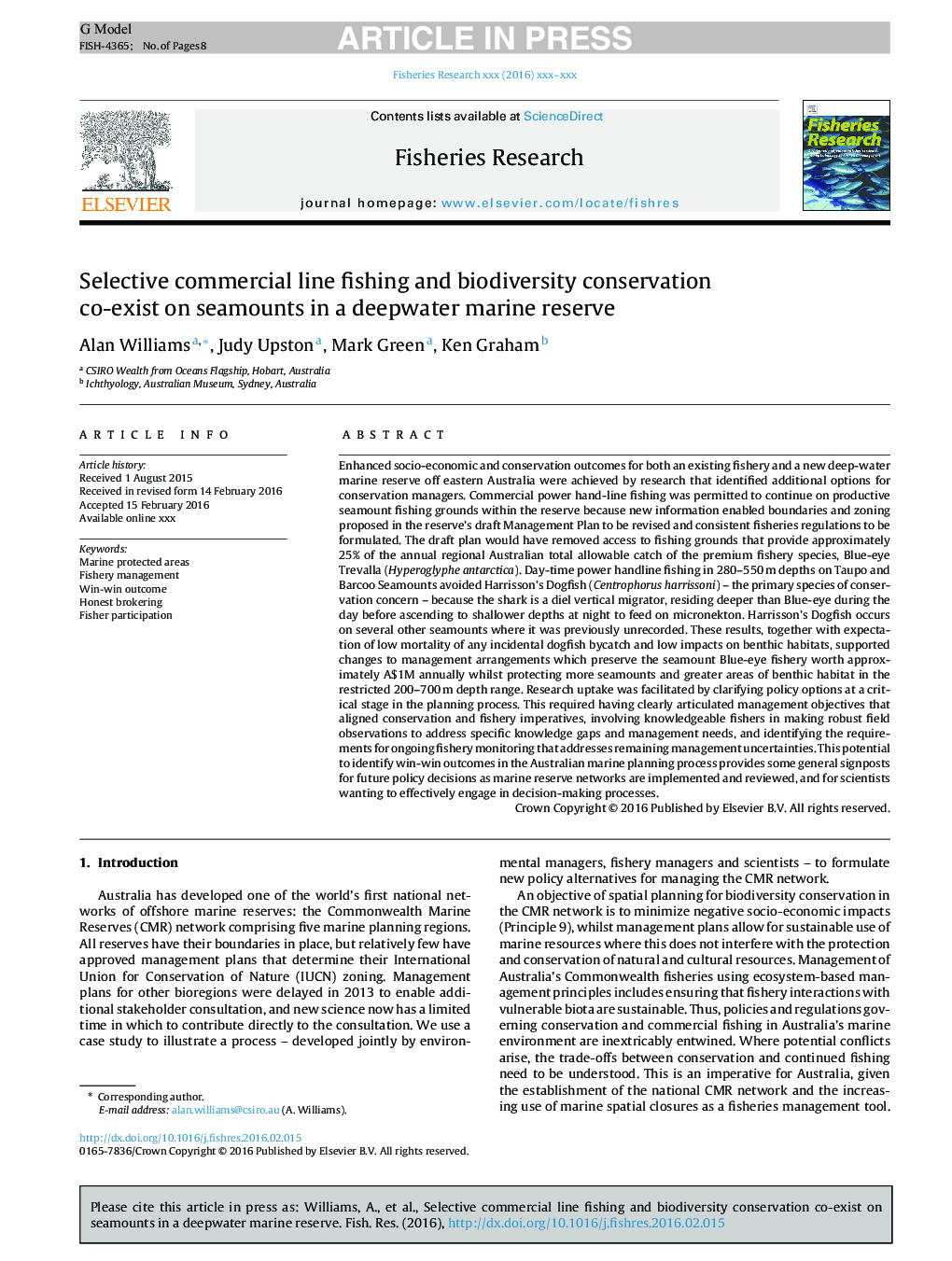| کد مقاله | کد نشریه | سال انتشار | مقاله انگلیسی | نسخه تمام متن |
|---|---|---|---|---|
| 6385266 | 1626786 | 2016 | 8 صفحه PDF | دانلود رایگان |
عنوان انگلیسی مقاله ISI
Selective commercial line fishing and biodiversity conservation co-exist on seamounts in a deepwater marine reserve
ترجمه فارسی عنوان
حفاظت از ماهی های انتخابی تجاری و حفاظت از تنوع زیستی در دریای مدیترانه در یک دریای عمیق دریایی وجود دارد
دانلود مقاله + سفارش ترجمه
دانلود مقاله ISI انگلیسی
رایگان برای ایرانیان
کلمات کلیدی
مناطق حفاظت شده دریایی، مدیریت ماهیگیری، نتیجه پیروزی، صادقانه واسطه مشارکت فیشر،
موضوعات مرتبط
علوم زیستی و بیوفناوری
علوم کشاورزی و بیولوژیک
علوم آبزیان
چکیده انگلیسی
Enhanced socio-economic and conservation outcomes for both an existing fishery and a new deep-water marine reserve off eastern Australia were achieved by research that identified additional options for conservation managers. Commercial power hand-line fishing was permitted to continue on productive seamount fishing grounds within the reserve because new information enabled boundaries and zoning proposed in the reserve's draft Management Plan to be revised and consistent fisheries regulations to be formulated. The draft plan would have removed access to fishing grounds that provide approximately 25% of the annual regional Australian total allowable catch of the premium fishery species, Blue-eye Trevalla (Hyperoglyphe antarctica). Day-time power handline fishing in 280-550Â m depths on Taupo and Barcoo Seamounts avoided Harrisson's Dogfish (Centrophorus harrissoni) - the primary species of conservation concern - because the shark is a diel vertical migrator, residing deeper than Blue-eye during the day before ascending to shallower depths at night to feed on micronekton. Harrisson's Dogfish occurs on several other seamounts where it was previously unrecorded. These results, together with expectation of low mortality of any incidental dogfish bycatch and low impacts on benthic habitats, supported changes to management arrangements which preserve the seamount Blue-eye fishery worth approximately A$1M annually whilst protecting more seamounts and greater areas of benthic habitat in the restricted 200-700Â m depth range. Research uptake was facilitated by clarifying policy options at a critical stage in the planning process. This required having clearly articulated management objectives that aligned conservation and fishery imperatives, involving knowledgeable fishers in making robust field observations to address specific knowledge gaps and management needs, and identifying the requirements for ongoing fishery monitoring that addresses remaining management uncertainties. This potential to identify win-win outcomes in the Australian marine planning process provides some general signposts for future policy decisions as marine reserve networks are implemented and reviewed, and for scientists wanting to effectively engage in decision-making processes.
ناشر
Database: Elsevier - ScienceDirect (ساینس دایرکت)
Journal: Fisheries Research - Volume 183, November 2016, Pages 617-624
Journal: Fisheries Research - Volume 183, November 2016, Pages 617-624
نویسندگان
Alan Williams, Judy Upston, Mark Green, Ken Graham,
